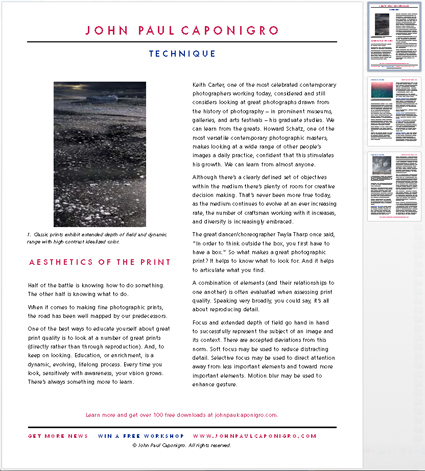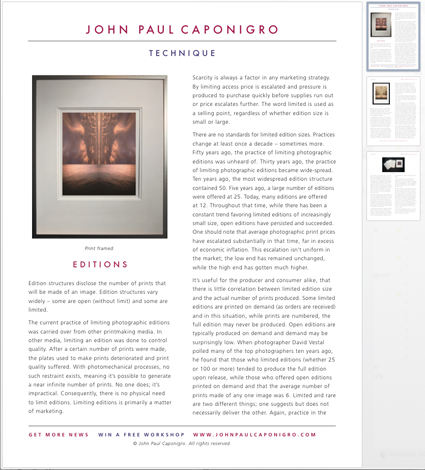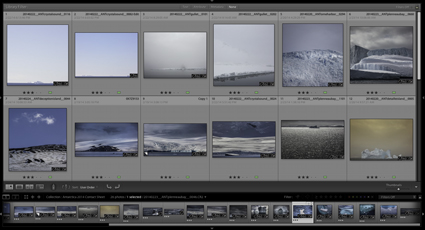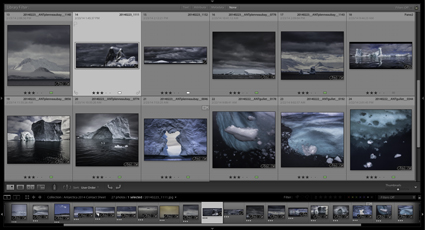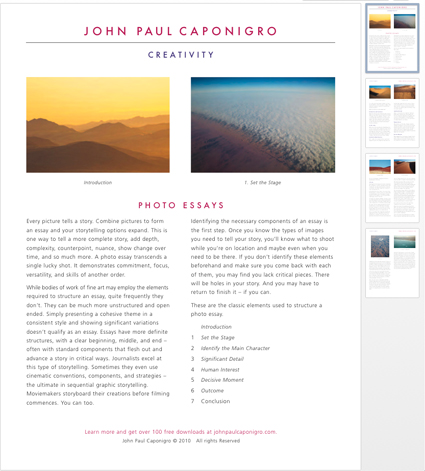Here’s a collection of my favorite quotes by Sally Mann.
“One of the things my career as an artist might say to young artists is: The things that are close to you are the things you can photograph the best. And unless you photograph what you love, you are not going to make good art.” – Sally Mann
“it’s always been my philosophy to try to make art out of the everyday and ordinary…it never occurred to me to leave home to make art.” – Sally Mann
“Unless you photograph what you love, you are not going to make good art.” – Sally Mann
“ If I could be said to have any kind of aesthetic, it’s sort of a magpie aesthetic—I just go and pick up whatever is around. If you think about it, the children were there, so I took pictures of my children. It’s not that I’m interested in children that much or photographing them—it’s just that they were there…” – Sally Mann
“Every image is in some way a “portrait,” not in the way that it would reproduce the traits of a person, but in that it pulls and draws (this is the semantic and etymological sense of the word), in that it extracts something, an intimacy, a force.” – Sally Mann
“I struggle with enormous discrepancies: between the reality of motherhood and the image of it, between my love for my home and the need to travel, between the varied and seductive paths of the heart. The lessons of impermanance, the occasional despair and the muse, so tenuously moored, all visit their needs upon me and I dig deeply for the spiritual utilities that restore me: my love for the place, for the one man left, for my children and friends and the great green pulse of spring.” – Sally Mann
“When the good pictures come, we hope they tell truths, but truths “told slant,” just as Emily Dickinson commanded. ” – Sally Mann
“What is truth in photography? It can be told in a hundred different ways. Every thirtieth of a second when the shutter snaps, its capturing a different piece of information.” – Sally Mann
“I think truth is a layered phenomenon. There are many truths that accumulate and build up. I am trying to peel back and explore these rich layers of truth. All truths are difficult to reach.” – Sally Mann
“If it doesn’t have ambiguity, don’t bother to take it. I love that, that aspect of photography—the mendacity of photography—it’s got to have some kind of peculiarity in it or it’s not interesting to me.” – Sally Mann
“Some of my pictures are poem-like in the sense that they are very condensed, haiku-lik. There are others that, if they were poetry, would be more like Ezra Pound. There is a lot of information in most of my pictures, but not the kind of information you see in documentary photography. There is emotional information in my photographs.” – Sally Mann
“I wish I could be a better writer, but writing is so difficult. I get seduced by visual aesthetics. Because I just like making beautiful pictures, sometimes I wander away from making a clear statement.” – Sally Mann
“There is a great quote from a female writer. She said, ‘If you don’t break out in a sweat of fear when you write, you are not writing well enough.” I tend to agree. I think my best pictures come when I push myself.” – Sally Mann
“I like to make people a little uncomfortable. It encourages them to examine who they are and why they think the way they do.” – Sally Mann
“Sometimes I think the only memories I have are those that I’ve created around photographs of me as a child. Maybe I’m creating my own life. I distrust any memories I do have. They may be fictions, too.” – Sally Mann
“Like all photographers, I depend on serendipity… I pray for what might be referred to as the angel of chance.” – Sally Mann
“I’m so worried that I’m going to perfect [my] technique someday. I have to say its unfortunate how many of my pictures do depend upon some technical error.” – Sally Mann
“All the good pictures that came so easily now make the next set of pictures virtually impossible in your mind.” – Sally Mann
“There’s always a time in any series of work where you get to a certain point and your work is going steadily and each picture is better than the next, and then you sort of level off and that’s when you realize that it’s not that each picture is better then the next, it’s that each picture up’s the ante. And that every time you take one good picture, the next one has got to be better.” – Sally Mann
“ Sometimes, when I get a good picture, it feels like I have taken another nervous step into increasingly rarified air. Each good-news picture, no matter how hard-earned, allows me only a crumbling foothold on this steepening climb—an ascent whose milestones are fear and doubt.” – Sally Mann
“As an artist your trajectory just has to keep going up. the thing that subverts your next body of work is the work you’ve taken before.” – Sally Mann
“Photographs open doors into the past but they also allow a look into the future.” – Sally Mann
Read more Photographer’s Quotes here.
View Photographer’s Documentaries here.
